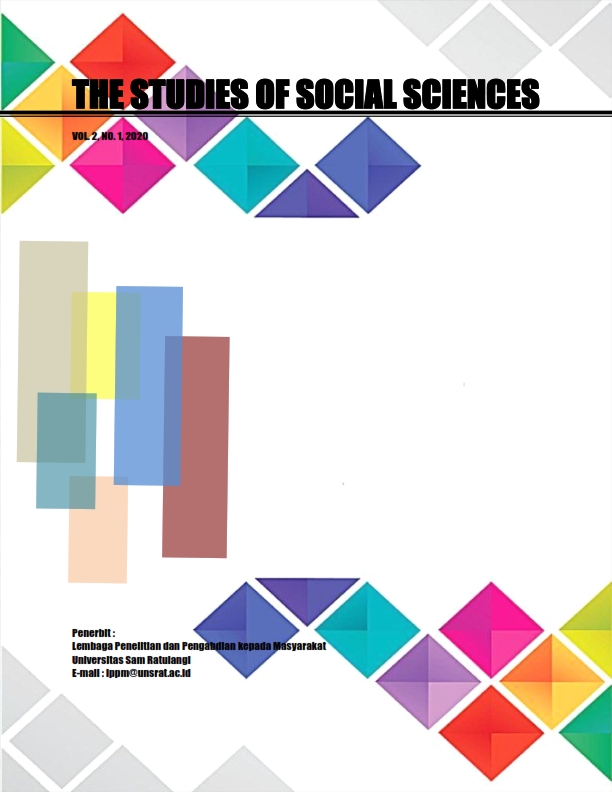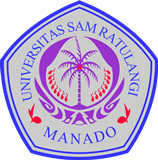Strategi Mitigasi Bencana Tsunami Di Desa Kema Satu Kabupaten Minahasa Utara
DOI:
https://doi.org/10.35801/tsss.2021.3.2.37255Keywords:
Mitigasi, tsunami, gempaAbstract
Abstract
Kema Satu Village is one of the villages in North Minahasa Regency. The area is facing directly with the Molucca Sea which is the source of the highest intensity of earthquake in Indonesia. Based on the results of the survey and situation analysis, it is known that a group of people in this village do not understand things related to tsunami disaster risk reduction. Therefore, a community partnership program (Program Kemitraan Masyarakat) has been implemented in the form of socializing the tsunami disaster mitigation strategy in Kema Satu village. The methods that have been used are counseling and simulation. The discussion and evaluation conducted at the end of the activity revealed that the program implemented had increased the public's insight and knowledge about the earthquake and tsunami potential in the area. The participating communities have also understood the ways that need to be prepared or implemented in the context of tsunami disaster mitigation.
Keywords: Mitigation; tsunami; earthquakeÂ
Abstrak
Desa Kema Satu adalah salah desa di Kabupaten Minahasa Utara dimana wilayahnya ke arah timur berhadapan langsung dengan Laut Maluku yang merupakan daerah sumber gempa bumi dengan intensitas tertinggi di Indonesia. Berdasarkan hasil survey dan analisis situasi diketahui bahwa kelompok masyarakat di desa ini kurang memahami hal-hal terkait pengurangan resiko bencana tsunami. Oleh karena itu telah dilaksanakan program kemitraan masyarakat dalam bentuk sosialisasi strategi mitigasi bencana tsunami di desa tersebut. Metode yang digunakan adalah penyuluhan dan simulasi sederhana. Dari diskusi dan evaluasi yang dilakukan pada akhir kegiatan diketahui bahwa program yang dilaksanakan telah meningkatkan wawasan dan pengetahuan masyarakat tentang gempa dan potensi tsunami di daerah tersebut, serta cara-cara yang perlu dipersiapkan ataupun dilaksanakan dalam rangka mitigasi bencana tsunami.
Kata kunci: Mitigasi; tsunami; gempa
References
Hamzah, L., Puspito, N.T., Imamura, F. (2000). Tsunami Catalog and Zones in Indonesia. Journal of Natural Disaster Science, 22 (1): 25-43.
Horspool, N., Pranantyo, I., Griffin, J., Latief, H., Natawidjaja, H., Kongko, W., Cipta, A., Bustaman, B., Anugrah, S.D., Thio, H.K. (2014). A Probabilistic Tsunami Hazard Assesment for Indonesia. Natural Hazard and Earth System Sciences Vol. 14: 3105-3122.
Mardiatno, D., Malawani, M.N., Anisa, D.N., Wacano, D. (2017). Indonesian Journal of Geography, 49 (2): 186-194.
Morin, J. (2008). Tsunami-Resilient Communities’ Development in Indonesia Through Education Actions. Disaster Prevention and Management, 17 (3): 430-446.
Pasau, G., Tanauma, A. (2011). Pemodelan Sumber Gempa di Wilayah Sulawesi Utara sebagai Upaya Mitigasi Bencana Gempa Bumi. Jurnal Ilmiah Sains, 11 (2): 202-209.
Raharjo, S.S., Mamuaya, G.E., Lumingas, L.J.L. (2013). Mapping of Tsunami Prone Areas in Coastal Region of Kema, North Sulawesi. Aquatic Science & Management, Edisi Khusus 1: 40-47.
Rahayu, H.P., Wahdiny, I.I., Mariani, A. (2007). Pedoman Pelaksanaan Latihan Kesiapsiagaan Menghadapi Bencana Tsunami (Tsunami Drill) untuk Kota dan Kabupaten. Kementerian Negara Riset dan Teknologi. 109 p.
Saputra, H., Arsyad, M., Sulistiawaty, S. (2016). Studi Analisis Parameter Gempa dan Pola Sebarannya Berdasarkan Data Multi-Station (Studi Kasus Kejadian Gempa Pulau Sulawesi Tahun 2000 – 2014). Jurnal Sains dan Pendidikan Fisika, 2 (1): 83-87.
Wibowo, S.N.E., As’ari, Raharjo, S.S. (2014). Analisa Daerah Dugaan Seismik Gap di Sulawesi Utara dan Sekitarnya. Jurnal MIPA Unsrat Online, 3 (1): 53-57.
Tamuntuan, G.H., Mambu, B.B., Pasau, G., Mandagi, A.T., Pandara, D.P., Ferdy, F. (2021). Propagation and Characteristic of Tsunami Wave in Lembeh Strait, North Sulawesi, Due to the Earthquake in Molucca Sea. IOP Conf. Series: Materials Science and Engineering, 1115, 012090.
Downloads
Published
How to Cite
Issue
Section
License
Authors who publish with this journal agree to the following terms:
- Authors retain copyright and grant the journal right of first publication with the work simultaneously licensed under a Creative Commons Attribution License (CC BY-SA 4.0) that allows others to share the work with an acknowledgement of the work's authorship and initial publication in this journal.
- Authors are able to enter into separate, additional contractual arrangements for the non-exclusive distribution of the journal's published version of the work (e.g., post it to an institutional repository or publish it in a book), with an acknowledgement of its initial publication in this journal.
- Manuscripts published in print and electronically are open access for the purposes of education, research, and libraries. Apart from these purposes, the editorial board is not responsible for violations of copyright law.






1.gif)



